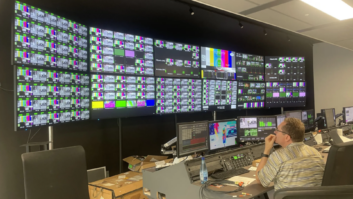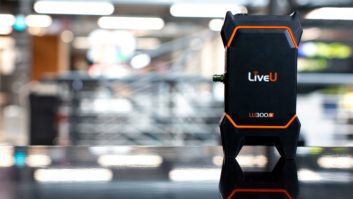Deutsche Telekom has announced the successful premiere of its 5G coverage of the opening Euro 2024 match.
The company set up a 5G campus network for RTL Deutschland, providing customised private facilities which enabled various live broadcasts during the tournament’s opening game. Live 5G reports directly from the fan zone were made possible by its proximity to the network, said Deutsche Telekom.
Signals were received directly via an integrated SIM card for transmission to the studio with no additional mobile solution needed. The network provided the basis for several parallel data streams with very high bandwidth, added the company.

Another successful test was carried out at Cologne, with an RTL team equipped with two mobile 5G cameras were able to test four different functions via the 5G connection.
- Ultra-low latency live video production
- Audio intercom for direct communication between the control room, the camera operator, and the interviewer.
- Return video to show the camera operator or interviewer in real time what is currently being broadcast.
- Remote camera control allows the control room to remotely control various parameters of the camera.
Two Sony FX6 cameras were connected to a CBK-RPU7 HEVC 4K/HD remote production unit for ultra-low latency HEVC video encoding. The encoded outputs were connected to the 5G campus network in the 3.7 –3.8 GHz frequency range via Sony’s PDT-FP1 Portable Data Transmitter and decoded by an NXL-ME80 processor.
RTL’s existing Nevion VideoIPath SDN Control Software System managed the delivery of pictures and sound received via the 5G network into RTL’s SMPTE ST 2110-based IP production infrastructure. Sony UWP-D series wireless microphones and receivers were also used.







